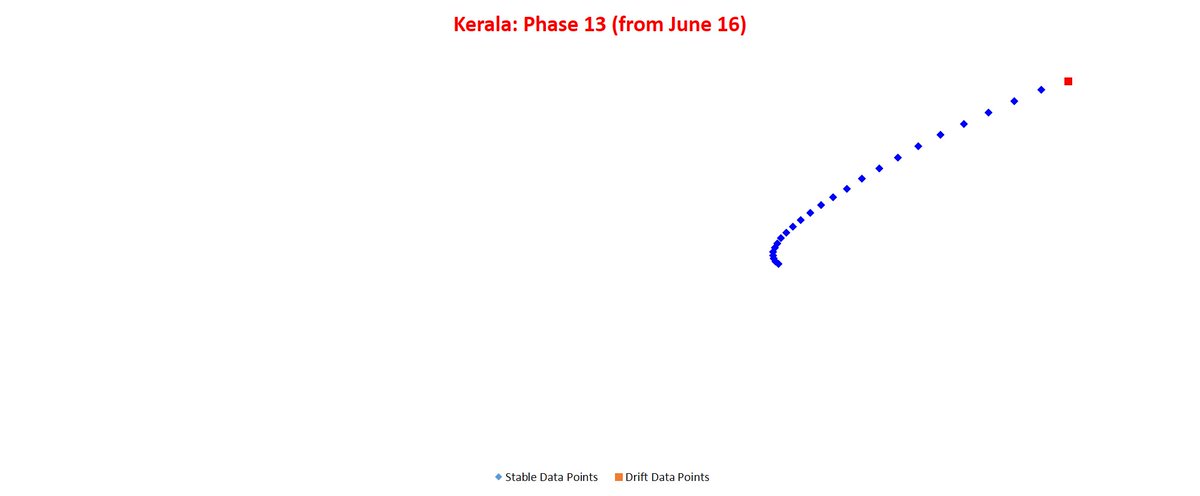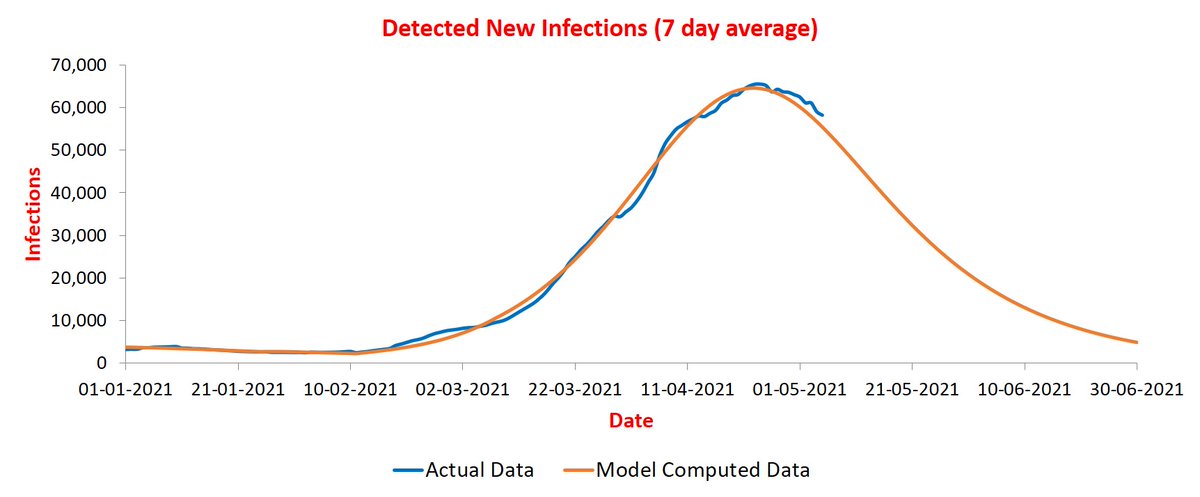
@stellensatz A thread on testing strategies. They can be classified in three broad types: 1) random testing, 2) targeted testing, and 3) infection chasing. Targeted testing is biased towards those more likely to be infected. For example, testing only symptomatic people.
Infection chasing is biased towards those less likely to be infected. For example, testing everyone in a locality if one positive case is found. This is the strategy recommended by WHO. So how does one find out which strategy is a state following?
The answer is already above: divide test positivity ratio (TPR) by the percentage of active cases. TPR will be close to percentage of active cases in case of random testing, significantly above in case of targeted testing, and significantly below in case of infection chasing.
There is one problem though: how does one find out percentage of active cases at any time? We only know detected active cases which can be much smaller than actual active cases. Also, to compute percentage, what should be denominator? Total population of the region?
What if pandemic is active only over a small section of population? Testing will be mostly limited to this section, and so to correctly compute the percentage of active cases, one needs to divide by population of the section.
SUTRA model provides a way: it shows that total number of active cases is T/epsilon where T is the reported active case, and population of section where pandemic is active equals rho * P where P is total population (rho, epsilon are parameters of model).
So fraction of active cases equals T/(epsilon*rho*P). The model also provides a robust way of estimating value of epsilon*rho at any time. Computing their values individually requires a calibration which is not always available but product can be computed without calibration.
Define normalized TPR (NTPR) as ratio of TPR and percentage of active cases, ie, 100*T/(epsilon*rho*P). Let us see how NTPR has changed for a few states. I start with Kerala. The plot has percentage of active cases on y-axis, date on x-axis, and size of bubbles denote NTPR. 

It is evident that Kerala followed Infection chasing strategy up to August last year. It was quite a success, and was highlighted in the media. From October onward, the strategy started shifting, moving fully to Targeted testing by March this year.
This explains why Kerala is unable to control the spread now. In Targeted testing, the TPR is much higher in relation to percentage of active infections which means one is detecting cases primarily from "core" of pandemic and not hitting its "boundary."
Let us look at Maharashtra. They have consistently followed Targeted testing strategy. The huge bubbles in July last year and March this year indicate concentration of testing to only symptomatic. 

The third state we look at is UP. It has been consistently doing Infection chasing! This corroborates aggressive village-by-village testing done in the state. 

However, there appears an anomaly here: Infection chasing would typically detect large fraction of cases thus making epsilon large. However, for UP, epsilon is around 1/100. It implies that only 1 in 100 positive cases are detected! How does one explain this?
A plausible reason is that a very large fraction of clusters of cases were fully asymptomatic, and hence escaped detection. Entire cluster being asymptomatic is crucial since even one detected case in a cluster would trigger extensive testing.
If this argument is correct, the next question is why have there been so many more asymptomatic cases in UP than some other states? This needs a proper study. There appears to be heterogeneity within India when it comes to Covid. I will post more states when they get done.
• • •
Missing some Tweet in this thread? You can try to
force a refresh







